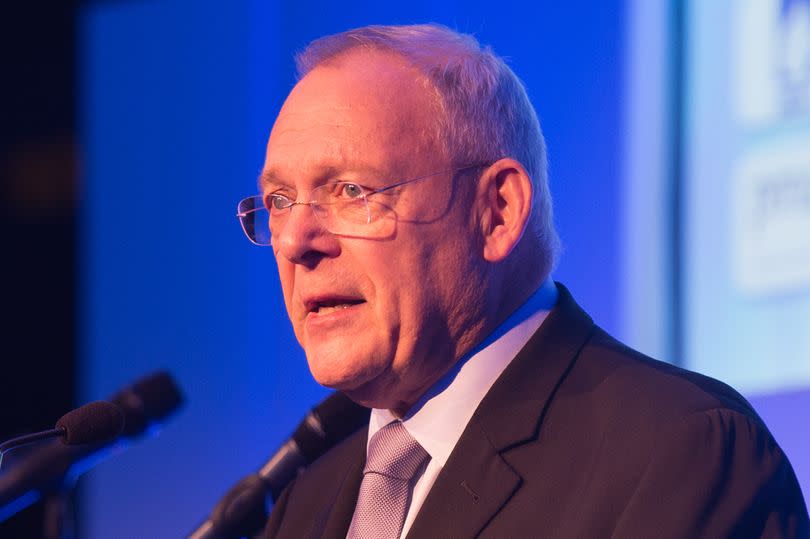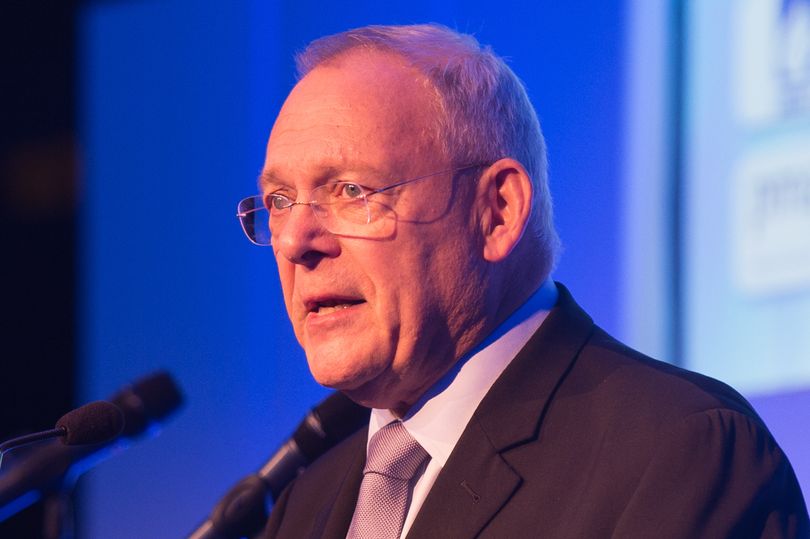
-Credit:Birmingham Mail
In June 1972, I interviewed Britain’s only matador in Britain’s only bullring – the dashing Henry Higgins in the old Birmingham centre-piece, the Bullring.
Higgins was my guest on the ATV Today news programme to talk about his book To Be A Matador that he had written with James Myers, a longstanding friend with a deep knowledge of the Spanish bull-fighting scene.
Henry, a handsome, engaging fellow, was the first Englishman to become a Matador de Toros – a specific title in the profession and the highest that can be attained.
READ MORE: Tesco and Sainsbury’s shoppers outraged and demand ‘is this really OK’
READ MORE: Major changes to Black Country bus timetables to come into effect
I had discovered that Higgins was born in Bogota, Colombia, of an English father and Mexican mother.
Henry went to a boarding school Holmewood House in Kent and then King William’s School on the Isle of Man.
His parents came to live in England and when he was 14 they went to Spain on holiday.
He was taken to a bull fight as his father had become interested in it in Mexico.
Higgins junior was hooked. Poster of bullfighters he had seen were pinned on his walls – Joaquin Bernado, Giuron and Chamaco. He read all the books he could find on bullfighting.
His parents then sent him to Spain to a summer school in Granada that offered courses in art, music and culture.
Here, the young Higgins developed a new interest taking up guitar lessons and hanging around gypsy caves listening to flamenco music. He decided to be – a flamenco musician.
He was also watching a young bullfighter who was to be well known in the UK while never coming here.
It was at the same time of George Best and The Beatles and Manuel Benitez known as “El Cordobes” became the same status and comparison in Spain.
Higgins went to art school in Guildford to study with a view to pursuing his ambition.
But the lure of bullfighting took over as he attended more and more contests.
He learned how each bullfighter had their own style and way of making passes. He began to understand some of the problems that bulls presented.
In his book, he wrote that a bullfighter’s work was judged on how well he adjusted to the circumstances of each bull but more than anything he was still in awe of bullfighters and what they did.
A chance meeting in a Madrid street with a matador agent led to his big break.
The long, hard road to the top eventually began with many lessons being learnt as he developed. He was gored several times, tossed and put in hospital, broke ribs and others. He had joined the brave matadors in the ring!
I immediately found a good rapport with Higgins on our meeting for the interview.
So much so that we decided with his writing friend James Myers and my wife Katie to go for a long dinner at the then-celebrity Italian restaurant Lorenzo’s in the city’s Digbeth area.
Henry’s professional name in the ring was “Canadas” which means the Canyons, based on his style of fighting the bull.
But the Spanish crowds and media called him “El Ingles”– the Englishman.
He became a fully fledged matador in 1970 and was briefly managed by Brian Epstein.
I was shocked when Henry Higgins was killed in a hang-gliding accident on August 15, 1978, aged just 33 years old.
It happened near the coastal Spanish town of Mojacar.
He had retired from bullfighting four years earlier.
His hang glider crashed to the ground after he had jumped from a hill.
He had survived the injuries and dangers of bull-fighting, only to die on a ride on a hang glider.
My meeting with Higgins had kindled an interest in bull-fighting and I watched a few fights on Spanish TV.
When I was in Madrid for the 1982 football World Cup, I decided to go and watch it in the Plaza de Toros de Las Ventas – the largest Bullring in Spain. It is known as the Cathedral.
But I left halfway through, realising this spectacle was not for me. Of course, bulls are really dangerous, but the way that picadors soften up the bull sickened me.
They are on horses and stab the bull in the neck to soften them up and draw blood.
I do not know why I reacted like that as I knew it was going to happen and had seen it on TV.
But watching it in the arena live I found it tough to take and I left.
I had one experience myself with a very small bull in Mexico during the 1986 World Cup.
My producer had this idea of filming Newbon the Matador.
I coped OK but even the tiny bull scared me a bit.
I saw it on film recently and it was not one of my finer moments in TV!
There has been a steady a declined in popularity in the sport in Spain. In 2007, there were 3,651 bullfights taking place in that country.
In 2022, there were 1546 – a 57 per cent decrease.
It is clearly not for the modern generation.
Looking back to 1972, there was something romantic about bullfighting but not any more.
It is a different world, when even greyhound racing is banned in Wales!
Big weekend for football and boxing. In my Tuesday sports column in both the Birmingham Mail and Coventry Telegraph plus online in association with Utilita Energy, I will be looking back at Aston Villa’s FA Cup semi-final and the Chris Eubank Jnr v Connor Benn fight.
